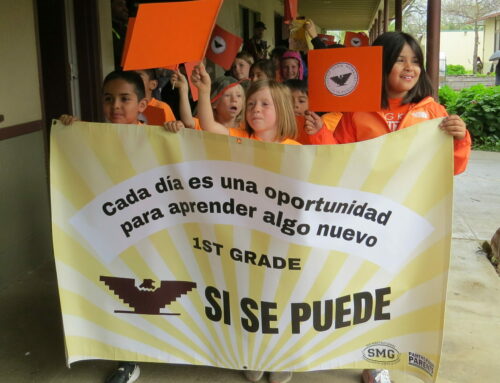Published in the February 4-17, 2015 issue of Morgan Hill Life
By Marty Cheek

Students stroll along a tranquil path at Gavlian Community College’s Gilroy campus.
Photo courtesy Gavilan College
A couple of weeks ago, I had a coffee chat at Morgan Hill’s GVA Cafe with Jan Bernstein Chargin, the director of public information at Gavilan Community College. One of the things we discussed was the proposal by President Barack Obama in his recent State of the Union Speech of making community college education a real opportunity for millions of Americans. I also brought up the fact during our conversation that Gavilan and other community colleges have an image problem — that many people really don’t understand the tremendous value that comes from these institutions of learning often described with disdain as “junior colleges.”
In 2019, Gavilan will celebrate its 100th anniversary. It got its start in Hollister as San Benito County Junior College a century ago. In the 1950s, my dad taught music classes at night to students at the college. At my dad’s funeral in 1985, Ralph Schroder, the first president of the college at its Gilroy campus, told me the story of how my dad played a role in bringing the campus to Gilroy.
In the early 1960s, residents of San Benito and southern Santa Clara counties started discussing the construction of a community college campus to serve the region. In 1963, a new community college district was drawn. People in San Benito County wanted to keep the campus in the Hollister location. Gilroy advocated a Gilroy site. A few people of Morgan Hill also asked the site be located in their town, but their petition was not taken seriously.
The discussion of the location of the campus got heated. According to Schroder, my dad learned that ranch property had come up for sale in the hills a few miles south of downtown Gilroy. He suggested the property be the campus site. The two feuding cities were satisfied with the compromise and the ranch land was purchased.
I recall in my high school senior year a meeting with the school counselor to discuss where I wanted to go after I graduated. I told him that I intended to go to Gavilan for two years and transfer to a four-year university later on. The counselor discouraged me from this plan, saying I had the grades to go to a four-year university. “You should apply to Stanford,” he said. Well, I couldn’t afford that school, I told him. And with the recent death of my dad, I needed to stay home and help my mom deal with the family’s transition period.
I can laugh about it now but I remember being really nervous about making the initial phone call to Gavilan’s registration office. Even though my dad had played a role in the Gilroy campus site selection, I was scared that maybe they might not accept me as a student. I gathered my courage, made the call, and soon was talking to a very friendly woman who registered me over the phone. In a short time, I was a new Gavilan student.
I spent two years at Gavilan before I transferred to San Jose State University to earn a degree in journalism. I remember that time fondly, making lots of friends and learning about literature, drama, journalism, science, math, political science and many other topics.
One of the things I learned from my Gavilan experience is that community colleges are a tremendous value. The value goes beyond the lower price tag of college tuition. Community colleges make it easier for citizens to build up their job skills, in turn building a stronger and more competitive economy through an educated workforce. Community colleges help people improve their quality of life by making them highly skilled and well-prepared as employees. They also help make Americans better citizens by broadening their minds to appreciate the benefits we enjoy and understand our obligation to preserve those benefits for future citizens.
As of the 2012-2013 school year, 45 percent of all undergraduate students were enrolled in public two-year colleges. That comes to about 7.7 million students. About 3.1 million of these students were enrolled full-time, and 4.6 million students were enrolled part-time. Their average age is 28. A large percentage of them live in poverty. President Obama hopes to give the opportunity to up to nine million Americans to have two years of free community college. No doubt members of Congress will balk at the price tag of $60 billion over 10 years. High school graduates who lack the dollars for a higher education can postpone taking on heavy loans and maybe luck into the class that will define their career path.
The payoff of this proposal is a stronger American economy. About three million jobs go unfilled in our country because business owners cannot find employees who have the mid-level skills to fill them. A two-year degree from a community college can give people those skills.
During our coffee chat, I told Bernstein Chargin that on my bucket list I want to one day give the commencement keynote speech at a Gavilan graduation ceremony. My goal will be to entertain the audience with a few funny stories about my Gavilan years — including a particularly embarrassing one of my own Gav graduation where I wore a pair of old sneakers with a nice suit as I stood on stage in the campus’s theater. Of coursre, I’ll also strive to give the usual words of wisdom to the graduating class. Most of all, I’d like to tell them that they must be really smart by going to Gavilan because they got tremendous value in community college learning.







